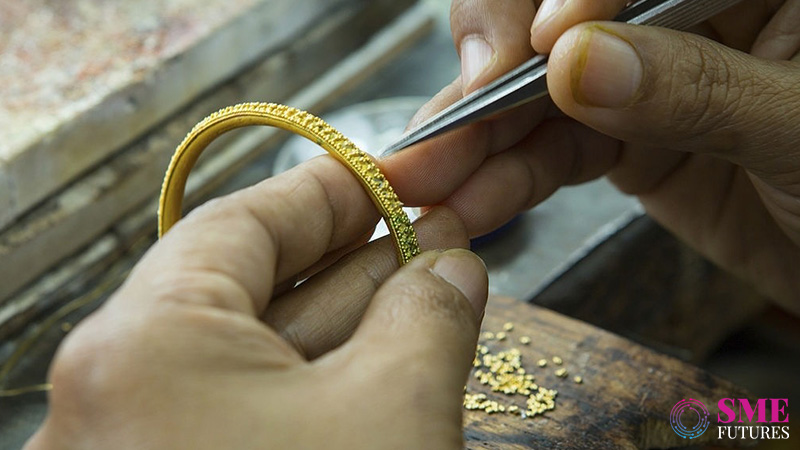For nearly two years, India’s gem and jewellery industry and related businesses have been suffering and bearing the brunt of the pandemic. Customers are not spending much on jewellery because of lockdowns and curbs on the retail sector; and the MSME jewellers, craftsmen, and artisans —- who make up the majority of the indigenous industry —- are unable to claim any respite or relaxation despite their growing woes and stress.
The All India Gem & Jewellery Domestic Council (GJC), the national apex body of the gems and jewellery industry, has recommended to the Union Finance Minister that the GST rate be reduced to 1.25 per cent in their Pre Budget-Recommendations 2022-23.
GJC has also urged FM to increase the PAN card limit from Rs 2 lakh to Rs 5 lakh rupees, citing the fact that many rural Indian households do not have PAN cards and have difficulty arranging the minimum required jewellery in times of need, particularly after a pandemic.
GJC has requested that the government issue appropriate clarification on the minimum amount of gold that an individual can deposit under the Gold Monetisation Scheme (GMS) without being questioned by any departmental authorities. GJC has also requested that the Gems & Jewellery industry be allowed an EMI facility for the purchase of 22K gold jewellery, which will result in a significant increase in the industry’s business following the pandemic.
Ashish Pethe, Chairman GJC, said, “Industry has been identified as one of the ‘stressed sectors’ in K V Kamath’s report. Hence, GJC has proposed changes in Section 40A of the Income Tax Act so that the existing daily cash limit of Rs 10,000/- per day be increased to Rs 1,00,000/- per day,” he said.
GJC has also urged the government to waive off the bank commission (1-1.5 per cent) on purchase of jewellery through credit cards thus ensuring a good boost to the ‘Digital India’ for the G & J Industry. We are confident and hopeful that there may be good reliefs announced for our industry during the Budget session, he adds.
GJC urged the government to extend to the Gems and Jewellery Industry the exemption from Capital Gains under Section 54F of the Income Tax Act of 1961. According to GJC, this will assist the industry in moving toward more organised and compliant business practises.
GJC has requested a cumulative GST rate of 1.25 per cent on gold, precious metals, gems, and articles of jewellery made of such metals, based on the Revenue Equivalence Principle. Previously, jewellery was subject to an excise duty of 1 per cent (without Input credit) or 12.5 per cent. (with input credit). However, jewellery was subject to excise duty only if the total turnover exceeded Rs 10 crore.
As a result, only a very small portion of the industry (approximately 15 to 20 per cent) was subject to excise duty. Furthermore, almost all states imposed a 1 per cent Value Added Tax (VAT) on jewellery (except Meghalaya, Kerala and Tripura). Hence, the majority of the players’ effective tax on locally manufactured gems and jewellery articles was 1 per cent or no more than 2 per cent.
The Gold Monetisation Scheme (GMS) was introduced by the Honourable Prime Minster in 2015 to turn gold holdings into an earning asset by allowing residents to deposit physical gold- bars, coins or jewellery – into a Gold Savings Account – the idea being to mobilise domestic gold to be channelised for productive use in the system.
However, the total deposits accumulated by the banks under the GMS are around 11.1 tonnes, which is a meagre number as compared to the estimated holdings of 23,000-24000 tonnes. Also, making the GMS more effective is important to address the widening current account deficit (CAD) issue. GJC, being a responsible trade body would like to emphasize upon the point that Government must clearly give exemptions to households for minimum 500 grams of gold deposited, being of ancestral nature, from questioning by any tax department. The same will make GMS more effective and benefit the government and participants at large, said GJC.











